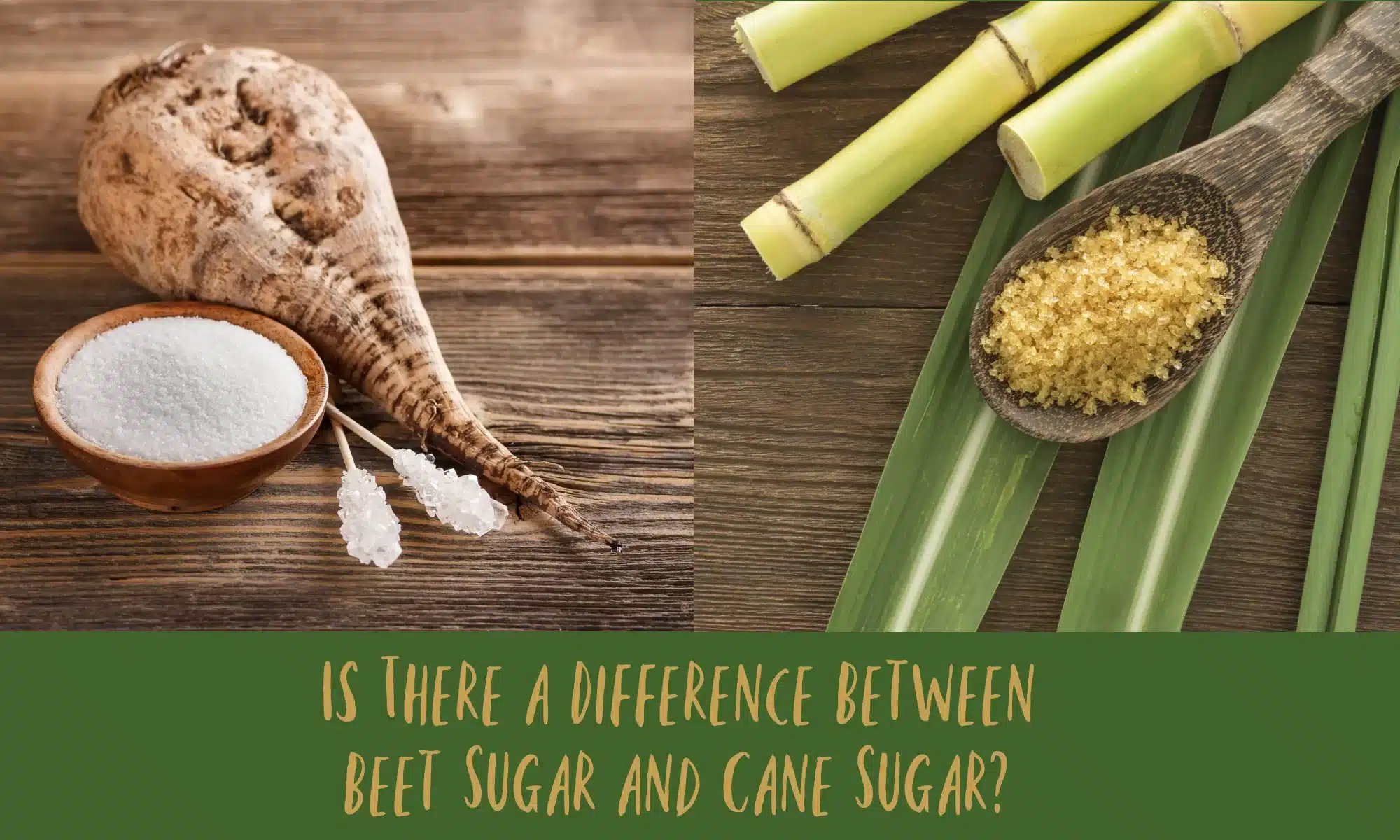Step-by-step guide for understanding Sugar beet vs sugar cane differences
Understanding Sugar Beet Vs Sugar Cane: a Deep Dive Into Their Processing and Applications
The comparison in between sugar beet and sugar cane exposes vital differences in their handling and use. Each plant has special farming methods that influence its geographical distribution. Sugar beets are primarily processed right into granulated sugar for various food, while sugar cane is often used in beverages. Comprehending these differences clarifies their roles in the food sector and their economic importance. The more comprehensive implications of their cultivation and handling warrant further exploration.
Review of Sugar Beet and Sugar Cane
Sugar beet and sugar cane are two primary sources of sucrose, each contributing significantly to the worldwide sugar supply. Sugar beet is an origin vegetable, typically gathered in cooler climates, while sugar cane is a tall turf that flourishes in warmer exotic and subtropical regions. The processing of sugar beet entails cleaning, cutting, and removing juice, followed by filtration and formation. In contrast, sugar cane handling consists of crushing the stalks to extract juice, which is then clarified and concentrated into sugar crystals.
Both crops are abundant in sucrose, but their composition varies slightly, with sugar cane typically having a higher sugar web content. Each source also contributes in biofuel production, with sugar beet frequently utilized for ethanol. While both are essential for different applications, their distinctive development requirements and processing techniques affect their corresponding payments to the sugar market.
Geographical Distribution and Growing Problems
Sugar beet and sugar cane are cultivated in distinct geographic regions, affected by their specific environment and soil requirements. Sugar cane grows in exotic environments, while sugar beet is much better fit for temperate zones with cooler temperature levels. Recognizing these growing problems is vital for enhancing manufacturing and making certain quality in both crops.
Global Growing Regions
While both sugar beet and sugar cane are vital resources of sugar, their international expanding areas vary substantially due to climate and dirt demands. Sugar beet flourishes primarily in temperate areas, with considerable production focused in Europe, North America, and parts of Asia. These locations typically include well-drained, productive dirts that support the plant's growth cycle. On the other hand, sugar cane is mostly grown in tropical and subtropical areas, with significant production centers situated in Brazil, India, China, and Thailand. This plant flourishes in cozy, humid environments that facilitate its development. The geographical circulation of these two crops highlights the flexibility of sugar cane to warmer environments, while sugar beet stays reliant on cooler, pleasant conditions for peak development.
Climate Requirements
The environment demands for sugar beet and sugar cane vary significantly, mirroring their adaptation to unique ecological problems. Sugar beet prospers in temperate environments, needing cool to light temperature levels, preferably ranging from 15 ° C to 20 ° C. It is sensitive to frost and gain from well-distributed rainfall during its growing season. This crop is normally cultivated in regions such as Europe and The United States And Canada.
Alternatively, sugar cane flourishes in exotic and subtropical environments, preferring warmer temperature levels between 20 ° C and 30 ° C - Sugar beet vs sugar cane. It needs bountiful sunlight and constant rainfall, making it fit to locations like Brazil, India, and Southeast Asia. The contrasting environment preferences of these plants noticeably affect their geographical circulation and agricultural practices
Soil Preferences
Although both sugar beet and sugar cane require specific dirt conditions to flourish, their choices differ considerably. Sugar beets flourish in well-drained, loamy soils abundant in raw material, with a pH varying from 6.0 to 7.5. These conditions are usually found in temperate regions, especially in Europe and The United States And Canada. On the other hand, sugar cane likes deep, abundant dirts with outstanding drainage and a somewhat acidic to neutral pH (6.0 to 7.0) This plant is primarily grown in tropical and subtropical environments, such as Brazil, India, and Australia. The geographic circulation of these crops mirrors their soil preferences, as sugar beets are suited for cooler environments, while sugar cane flourishes in warmer, a lot more damp settings.
Collecting and Handling Techniques
In checking out the harvesting and handling techniques for sugar beet and sugar cane, unique methods arise for every crop. The contrast of gathering approaches exposes variations in performance and labor demands, while removal methods highlight distinctions in the initial processing stages. Additionally, understanding the refining procedures is crucial for evaluating the quality and return of sugar created from these two resources.
Harvesting Methods Contrast
When thinking about the collecting approaches for sugar beet and sugar cane, unique methods arise that reflect the special characteristics of each plant. Sugar beet collecting usually involves mechanical techniques, making use of specialized harvesters that uproot the beets from the ground, eliminating tops and dirt at the same time. This technique enables for reliable collection and minimizes plant damage. On the other hand, sugar cane harvesting can be either hands-on or mechanical. Manual harvesting entails workers reducing the stalks close to the ground, while mechanical harvesting makes use of huge machines that reduced, slice, and accumulate the cane in one operation. These differences in collecting methods highlight the versatility of each crop to its growing environment and the agricultural techniques common in their corresponding areas.
Extraction Methods Introduction
Extraction strategies for sugar production vary significantly in between sugar beet and sugar cane, showing their unique attributes and handling needs. Sugar beets are commonly harvested utilizing mechanical farmers that reduced the origins from the ground, followed by cleaning to get rid of dirt. The beets are after that cut right into slim pieces, called cossettes, to promote the removal of sugar through diffusion or hot water removal. On the other hand, sugar cane is normally harvested by hand or device, with the stalks reduced short. After gathering, sugar cane goes through crushing to draw out juice, which is after that made clear and concentrated. These extraction approaches highlight the unique methods utilized based upon the resource plant's physical qualities and the why not look here desired efficiency of sugar removal.
Refining Processes Explained
Refining procedures for sugar from both sugar beet and sugar cane include several essential actions that guarantee the last item is pure and suitable for intake. At first, the raw juice extracted from either resource undergoes explanation, where pollutants are gotten rid of utilizing lime and heat. Following this, the juice is vaporized to concentrate the sugars. For sugar beetroots, the process commonly includes carbonatation, while sugar cane might undergo a much more straightforward condensation approach. When focused, the syrup is subjected to condensation, producing raw sugar. Lastly, the raw sugar is detoxified through centrifugation and additional refining, causing the white granulated sugar typically located on store shelves. Each action is critical in making sure item quality and safety for customers.
Nutritional Profiles and Health Impacts

Health impacts related to both resources greatly come from their high sugar web content. Too much usage of sucrose from either source can cause weight gain, oral problems, and boosted danger of persistent illness such as diabetic issues and heart illness. Sugar cane juice, commonly consumed in its natural form, might give added anti-oxidants and phytonutrients compared to refined sugar beet products. Eventually, moderation is essential in utilizing both sugar beet and sugar cane in diet regimens to minimize prospective health and wellness risks.
Economic Relevance and International Production
The economic relevance of sugar beet and sugar cane is substantial, considering that both crops play essential duties in the worldwide agricultural landscape. Sugar cane, mainly grown in tropical and subtropical areas, represent roughly 75% of the globe's sugar manufacturing. Countries like Brazil and India are leading producers, adding significantly to their national economic situations via exports and regional usage.

The global sugar market is valued at billions of bucks, influenced by numerous elements consisting of climate, profession policies, and customer demand. As necessary, both sugar beet and sugar cane are important for financial stability and development within the agricultural field worldwide.
Applications in the Food Market
In the food sector, sugar beet and sugar cane serve crucial roles, giving sweeteners that are important to a wide variety of products. Both sources produce granulated sugar, which is a primary component in baked items, beverages, and confections. Sugar beet, commonly preferred in regions with cooler climates, is frequently located in processed foods such as jams, jellies, and dairy items. On the other hand, sugar cane is preferred in exotic regions and is often made use of in beverages like rum and soft drinks.
Past granulated sugar, both resources are likewise refined right into molasses, syrups, and other sweeteners, enhancing taste profiles and improving texture in different applications. Additionally, the byproducts of sugar manufacturing, such as pulp and bagasse, are utilized in creating animal feed and biofuels, additionally showing their versatility. In general, sugar beet and sugar cane are necessary parts of the food industry, influencing taste, texture, and general product high quality.
Environmental Factors To Consider and Sustainability
As worries concerning environment adjustment and source deficiency expand, the ecological influence of sugar beet and sugar cane farming has actually come under analysis. Sugar cane, usually expanded in exotic areas, can cause logging and environment loss, intensifying biodiversity decline. Additionally, its cultivation frequently depends on intensive water usage and chemical plant foods, which can contaminate regional waterways.
Conversely, sugar beet is generally grown in temperate environments and might promote soil health via plant rotation. It additionally deals with challenges such as high water intake and reliance on chemicals.
Both crops add to greenhouse gas discharges during processing, but sustainable farming practices are arising in both industries. These consist of precision farming, chemical-free farming, and incorporated pest monitoring. In general, the ecological sustainability of sugar production stays a pressing problem, demanding constant analysis and adoption of eco-friendly methods to mitigate unfavorable results on environments and communities.

Frequently Asked Inquiries
What Are the Differences in Preference In Between Sugar Beet and Sugar Cane?
The taste distinctions in between sugar beet and sugar cane are subtle yet distinctive. Sugar beet tends to have a slightly earthier taste, while sugar cane offers a sweeter, extra aromatic profile, interesting various cooking choices.
Can Sugar Beet and Sugar Cane Be Used Reciprocally in Recipes?
Sugar beet and sugar cane can often be utilized mutually in right here recipes, though subtle differences in taste and appearance may develop. Replacing one for the various other typically preserves the desired sweet taste in culinary applications.

What By-Products Are Produced From Sugar Beet and Sugar Cane Handling?
The handling of sugar beetroots and sugar cane returns various by-products. These include molasses, pet feed, and biofuels. Each spin-off offers distinctive objectives, adding to agricultural and industrial applications beyond the primary sugar extraction.
How Do Sugar Beet and Sugar Cane Affect Soil Health?
The impact of sugar beet and sugar cane on soil health varies; sugar beetroots can boost raw material, while sugar cane might bring about dirt destruction otherwise handled appropriately, impacting nutrient levels and soil structure.
Are There Specific Selections of Sugar Beet and Sugar Cane?
Numerous details ranges of sugar beet and sugar cane exist, each adjusted to different climates and dirt kinds. These ranges are cultivated for traits such as yield, condition resistance, and sugar web content, maximizing farming efficiency.